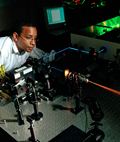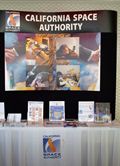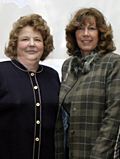
Project List Summary
INNOVATION SUPPORT
The California Innovation Corridor (The Corridor) infrastructure is made up of federal labs, research universities, corporate R&D and manufacturing entities, national security RDT&E installations, and Nobel laureates—the greatest concentration of potential innovation assets in the world. Yet, despite California's reputation for entrepreneurship, according to the Innovation-Entrepreneurship NEXUS study, not a single sub-region within the Corridor's 13 counties was ranked within the top 25 most entrepreneurial regions in the country. The projects listed below are designed to significantly improve this condition.
1.1 Creation of an Economic Development Toolkit
1.2 Develop 21st Century Job Profiles to define future workforce skills and needs
1.3 Compilation of an Innovation Asset Inventory to foster innovation and entrepreneurship
1.4 Support of entrepreneurial companies, including SBIR Phase II awardees, to identify best practices that lead to commercialization
1.5 A pilot program set to identify and replicate an existing successful model of technology transfer from a university to the business community
1.6 Identification of a new model for student payload rideshares on military space craft
1.7 Establish a Workforce Innovation Board (WIB) toolkit for support of entrepreneurial companies
INDUSTRIAL REJUVENATION
An issue at least partly attributable to globalization, is the Corridor's 26% manufacturing job loss. This staggering decline, from 1990-2004, represented nearly all the decline in California manufacturing and constituted 13% of the national decline during that period. Computer and electronic product manufacturing, a key element of California's past innovation was the largest single segment and constituted 40% of the Corridor's manufacturing recession. The projects listed below were developed to significantly stimulate industrial competitiveness.
2.1 Identification of high priority supplier training needs through surveys, forums and industry input
2.2 Characterization of "Smart Supplier" competitiveness skills
2.3 Build a "Smart Supplier" resource for providers within the Corridor
2.4 Development of an industry-driven community college Manufacturing Technician Training Program
TALENT DEVELOPMENT
The shortage of qualified technical workers is also a challenge to the Corridor. Nearly every sector of California's high-tech economy shares this problem. It is compounded by the graying of the workforce and the low number of such talent in the pipeline. A significant portion of the Corridor's 1.5M manufacturing workforce is rapidly reaching retirement age, creating a technical worker crisis of major proportions. Retirements are exacerbated by the fact that 37% of the University of California technical grads are foreign students ineligible to work on high-security projects. The State is just not graduating enough science and math majors since, for example, 2100 math teachers are needed, not counting those needed in industry, and only 1389 math majors graduated in California in 2004. The unemployment level within the Corridor has averaged more than 1% higher than the national average for the 1990-2004 period and job growth for 2001-2004 showed a disturbing trend—industries with a net increase in employment paid an annual wage almost $15,000 lower than industries showing a net decrease. Thus the new jobs tend to be lower-wage. The many projects listed below were created to both better understand the California workforce and improve its competitive advantage.
3.1 Compilation of a Corporation Workforce Skills Analysis
3.2 Unifying a Space Employer/University Consortium
3.3 Advancing space related experiential university internships and mentoring programs
3.4 Develop and execute an outreach of systems engineering training programs throughout the Corridor
3.5 Organize the development of a statewide STEM education collaborative action plan
3.6 Creation and implementation of science and math middle and high school teachers institutes
3.7 Originate an industry-driven training program to retrain dislocated software specialists for space related computer science technician work
3.8 Orientation of university and graduate advisors to innovation-oriented acumen through the establishment of an industry mentorship link
3.9 Advancing the Troops To Teachers recruitment and accelerated credentialing of math/science teachers
3.10 Establish a model university and high school mentoring program
3.11 Foster a community college industrial technology-based degree in Mechatronics
3.12 Produce real-world curriculum for educator conferences focused on STEM education and space science
3.13 Develop a virtual web-based participatory "California Space Education Center" using interactive and community building Internet technology
3.14 Building a Learning Collaboratory of training and best practices on innovative approaches to partnerships in support of an innovation ecosystem



